 California stands in for Dixie as sexploitation goes country. 
American movies are made today in many places other than southern California as a way to reduce production costs. Regions like Georgia, New Mexico, and British Columbia have built thriving film industries. But once upon the not-so-distant past the reverse was true. In order to avoid high location costs you filmed in and around Los Angeles no matter where your film was set, even if it looked ridiculous. Southern Comforts, which premiered today in 1971, is ostensibly set in the deep south, but one look at its bone dry Dukes of Hazzard landscapes tells you're about as close to the south as Manhattan is to the Bahamas.
A middle-aged huckster and his three mini-skirted companions drive across “the south” looking to stage a beauty contest, but get stranded in hayseedville and decide to do it in the barn of a gentleman rancher named Colonel Melany, who insists on being paid not only in money, but in flesh. Eventually some girls from around the way show up to compete, and everybody gets naughty in the hay as a hoe-down band plays in the background. When the beauty contest finally takes place, it turns into a group striptease, which is eventually raided by local cops. That pretty much covers the plot.
The director of all this, Bethal Buckalew, who had also made the softcore efforts Tobacco Roody and Midnite Plowboy, understood the box office dynamic of the early 1970s wherein it was enough to guarantee profit if you showed a lot of nudity. While less cynical types toiled with plots and production values, the visionary Buckalew simply trafficked in boobs, bush, and flashes of vulva (which earned this film an x rating). The only requirement for his formula was that a few of his actresses be totally uninhibited and somewhat beautiful, and he's covered thanks to co-star Monica Gayle and a couple of uncredited contributors.
Gayle was the reason we watched this. She was in the cult hit Switchblade Sisters, and clearly she moved up in the world, because Southern Comforts doesn't reach anywhere near the level of her girl-gang classic. But we'll give this movie credit for one thing—it looks like everyone had a laugh making it. Back during the liberated ’70s nobody worried that their awful sexploitation flicks might last forever thanks to digital technology. They figured to have fun, get paid, and maybe, just maybe, ascend into mainstream cinema. This amateurish effort helped nobody's career, but at least—along with a few drinks—it helped our Friday night.
 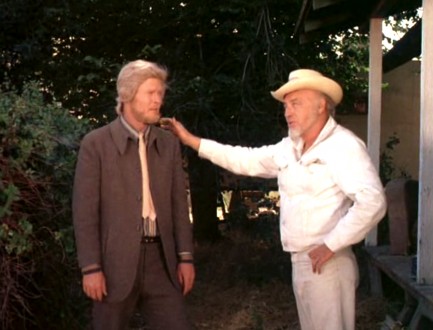 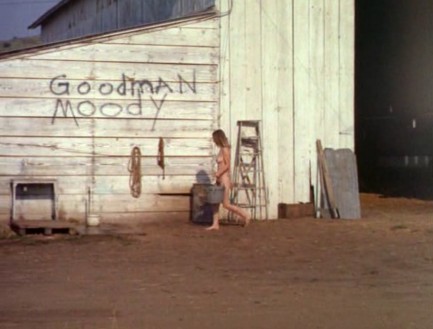             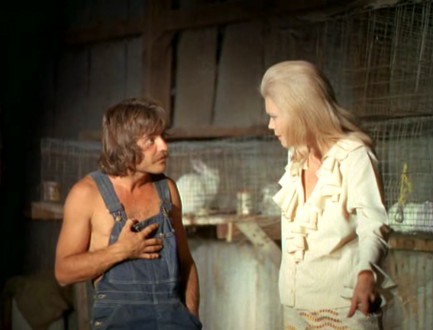        
 Fillette gets overheated and the final result isn't pretty. 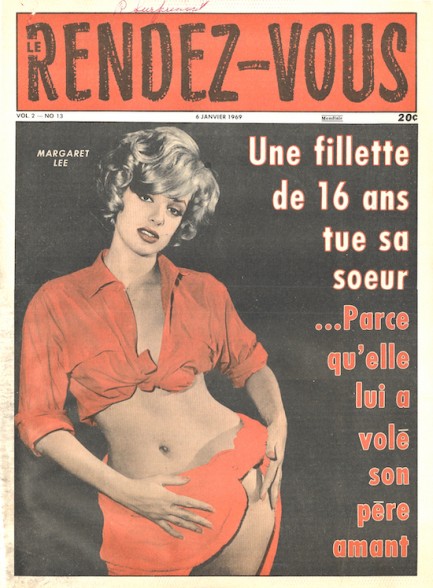
Montreal based Le Rendez-Vous is one of the more interesting mid-century tabloids. It faithfully catalogued celebrity, crime, and nature's misfortunes and atrocities—the classic tabloid formula—but did so with an extra layer of brutality that's amazingly raw for a Canadian publication. Was it that way because Canada was such a safe country and its readers liked to walk on the dark side? We think that could be a factor, though it's true to an extent for all tabloids that their readers seek exotic thrills. But as if to prove our point about Le Rendez-Vous, the crime stories in this issue from today in 1969 all come from outside countries: Mexico, South Africa, and the good ole USA. Canada seemingly wasn't a good source of chaos and killing. The editors first pump up the sex factor with British actress Margaret Lee on the cover, then, to the right, you see a stack of text about a “fillette de 16 ans.” No, it's not about a dry-aged steak. It says: 16-year-old girl kills her sister... Because she stole her lover father. Lover father? That sounds ominous. And indeed, turns out a Mexico City girl named Amalia Martinez, her sister Cristina, and father Ernesto, were in an incestuous love triangle. Amalia solved this family beef by shooting her sister in the head. “That little silly girl,” she said after being arrested, “got what she deserved.” Clearly she still hadn't quite worked through her anger. Probably she always had to share everything with her sister, and usually got the short end of the stick. It's quite a story from Le Rendez-Vous—100% prime tabloid journalism.
Elsewhere in the issue readers get a feature on circus performers, including a photo of a contortionist that brings to mind the time we saw a woman in Marrakech crawl through a tennis racket (we were searching for a cursed monkey's paw, but seeing that feat was a worthy consolation prize). Also inside is Croatian actress Sylva Koscina on the Côte d'Azur, Italian actress Antonella Dogan in the centerfold, ex-first lady Jaqueline Onassis in Greece, and our old friend, model and actress Donna Marlowe, in a bikini. We have plenty of scans of those items and more below, two other issues of Le Rendez-Vous here and here, and more from this publication to come.
 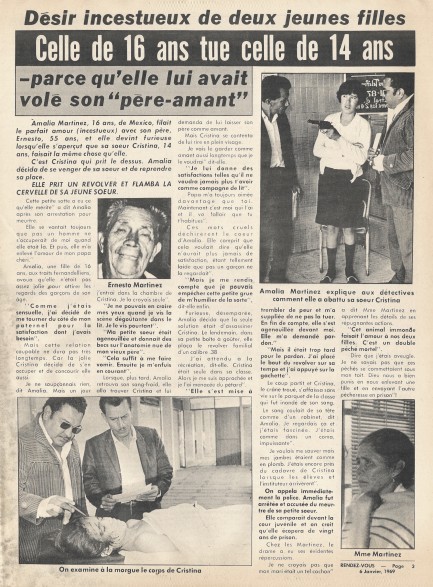  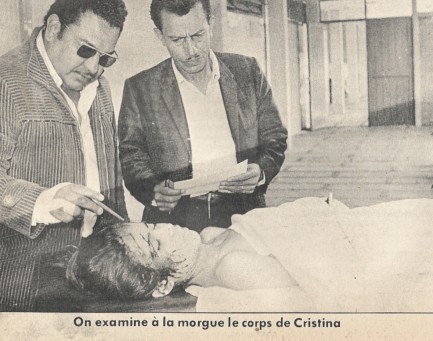   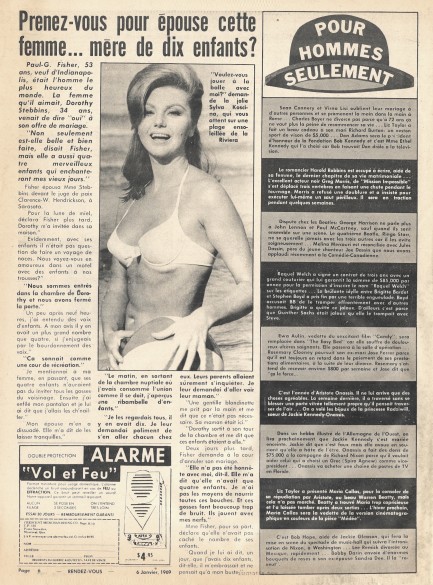     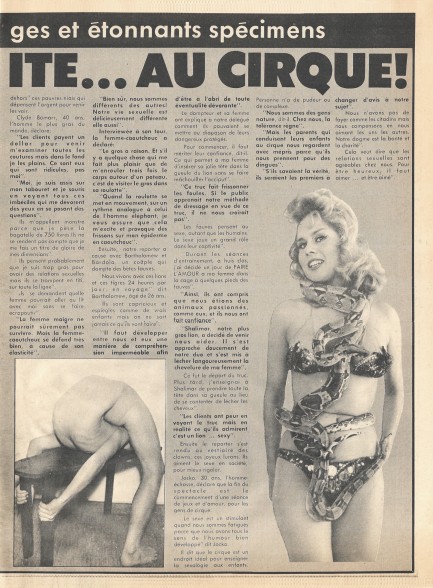     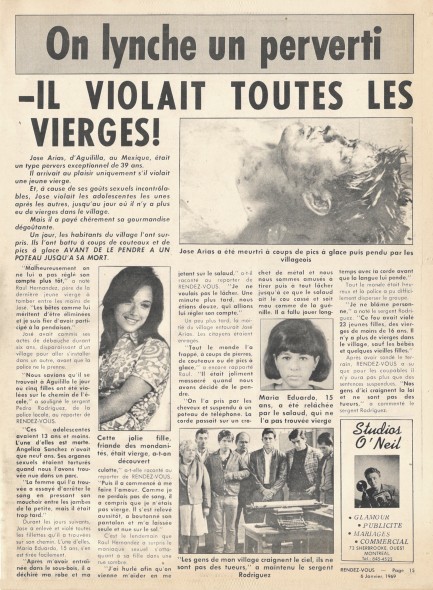   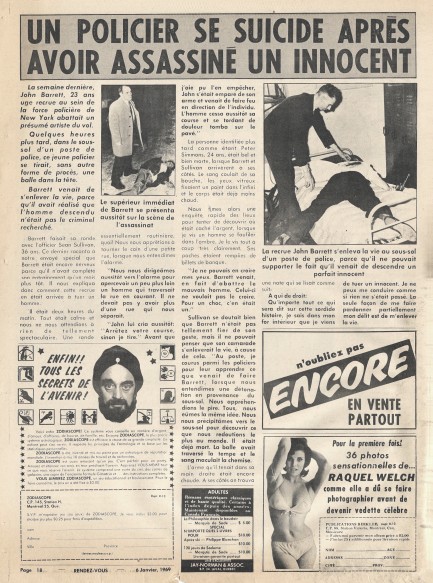 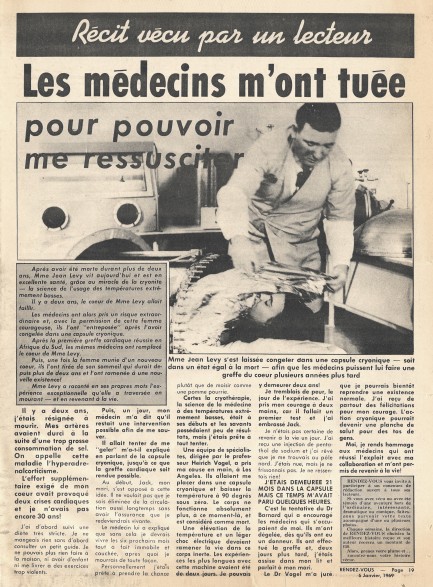 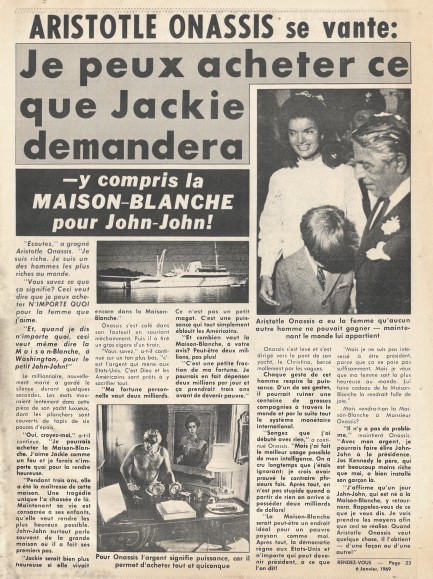 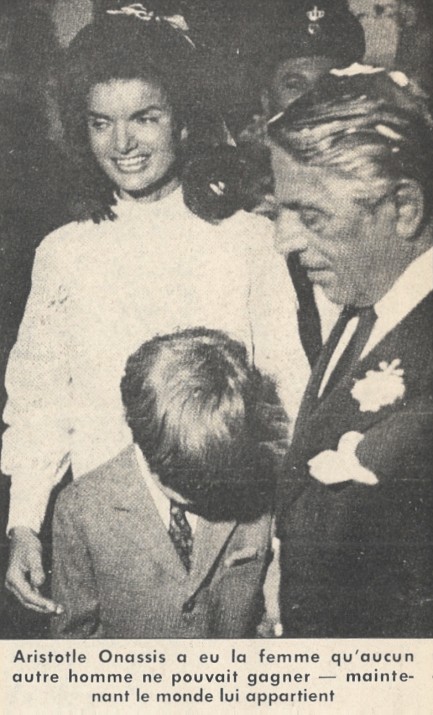  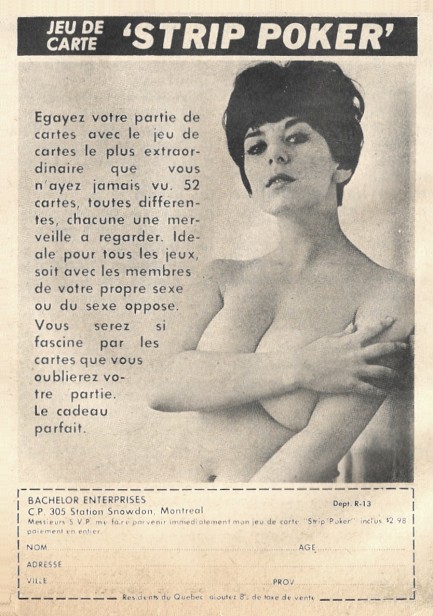
 Well, sure, honey, if that's what you want, I guess I can try to help you put this deal to bed. 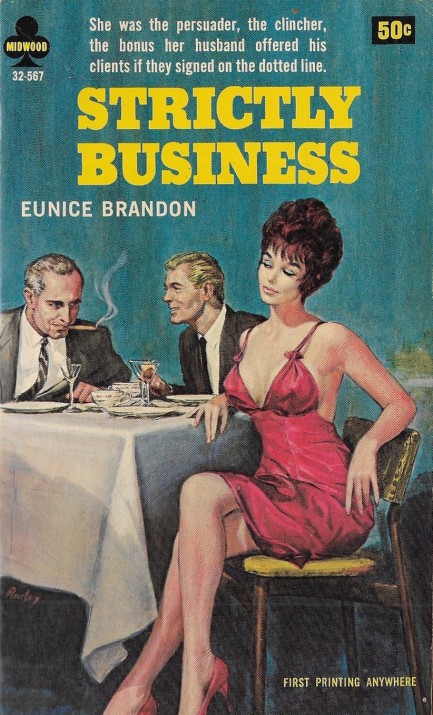
 Midwood Books had a near-monopoly on artist Paul Rader, and good thing, because the guy was brilliant. His cover for the sleaze novel Strictly Business features an amusing tableau of a dapper businessman chatting with his leering colleague, as a coy beauty sits nearby. Midwood Books had a near-monopoly on artist Paul Rader, and good thing, because the guy was brilliant. His cover for the sleaze novel Strictly Business features an amusing tableau of a dapper businessman chatting with his leering colleague, as a coy beauty sits nearby.
The cover blurb is a little deceptive. The husband in this tale is actually the first to cheat, which drives his wife to do the same, first sampling some same-sex sweetness, then bedding down with her hubbie's hated rival. While the husband has an affair to help his business, his wife cheats in retaliation. When the husband encourages her to use her wiles to help him seal a deal, she leaves him. End of book. So the cover text is not on target. Not only that, but the rear synopsis makes up a scenario that never occurs at any point. Such are the hazards of sleaze novels, but this one is still a pretty fun read. Midwood was top of the genre for good reason.

 There's no plan B. There's only payback. 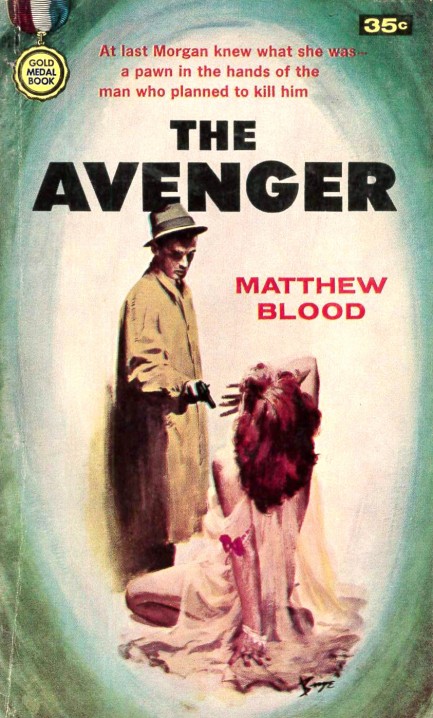
Above you see a cover for The Avenger, written by Matthew Blood and published in 1952. It's a detective novel that reads like a parody. It was the first of two starring hard-boiled private dick Morgan Wayne, and it's immediately clear why the character lasted only two outings. In many hard-boiled detective books the hero is unrealistically tough and the women unbelieveably pliant, but here that's taken to a ridiculous extreme, only with poor writing that makes clear that this is not a parody, but a serious attempt at urban crime drama in the Spillane mold. At one point the anti-hero Wayne bites the head off a crook's prized goldfish then shoots him. This is all in pursuit of the person who killed Wayne's new secretary Lois, who he'd been looking forward to laying:
He concentrated fiercely on visualizing her as she must be waiting for him now. That was the only drawback to this affair. There hadn't been enough build-up. Not enough expectation. Nothing at all of the slow and delicious burning that gradually takes complete possession of a man during the period of delightful dalliance that generally precedes the consummation of a civilized love affair.
So much wrong with that paragraph. Delightful dalliance that precedes consummation? But we'll let it pass:
She must be waiting for him in her apartment now, damn it. Soaking up the warmth of a hot bath while she waited for him and anticipated his coming. He savagely cursed the circumstances that were keeping them apart, and unconsciously trod the accelerator closer and closer to the floor boards...
That's pretty bad too. Anyway, Wayne arrives at Lois's apartment to find her dead and mutilated, and along the road to solving the crime he's pursued sexually by a sixteen-year-old, her mother, and various other cock-starved characters, before climbing the ladder to the person who ordered the murder and taking care of business. It's all written in the same graceless fashion as the above examples. The amazing part is that Matthew Blood was a pseudonym for W. Ryerson Johnson and David Dresser. There's no excuse for two brains producing a half-witted book. We do like the cover art, though, and no wonder—it's Barye Phillips again.
 Intelligent, thoughtful, scalding hot—what's the catch? 
H. Rider Haggard's novel She is one of those rare fantasy/sci-fi novels that has been widely read through three different centuries. A pre-pulp novel, it was originally published in 1887, retained popular interest through the pulp era when it was made into a 1935 movie starring Helen Gahagan, continued generating interest through the mid-century paperback era and into the 1960s, when it was adapted with Ursula Andress in the lead role, and remains available in bookstores and from digital booksellers in the 2020s. The book has enjoyed such longevity because it's a well-written and archetypal lost world adventure with all the elements that sub-genre requires: intrepid explorers in an exotic land, savage encounters with locals, a central quest for something thought to be priceless or unobtainable, and a temptress at the center of the narrative.
The temptress, Ayesha, is an ancient but youthful countenanced woman of Arab descent who has discovered the secret to long life, but who's lost her true love along the way and awaits his reincarnation. She lives in a lost realm called Kôr amidst a host of Africans, who she hates, but rules while she pines for her dead lover to return. Two thousand years after his death, his direct descendant undertakes an expedition to the African interior, where he and Ayesha are destined to meet. This descendent, Leo Vincey, accompanied by his mentor and friend Horace Holly, has been handed down a story through the generations of an immortal woman who murdered his forebear. His quest is to find if such a fantastic story can be true, and possibly take revenge for his entire bloodline.
Haggard is good with descriptive passages, but what's equally interesting is that the book is partly procedural in nature, with long transcriptions of Latin, Arabic, and Greek, and an abundance of academic discussion. Eventually the tale centers around Ayesha's belief that Leo Vincey is her dead lover returned to her, which means her African vigil is mercifully at an end. Her plan? To go to England and rule it with Leo. She'll have to depose Queen Victoria to make that happen, but since she possesses advanced if not magical powers, she considers that no biggie. While we'd have loved to see the story head in that direction, obviously nothing written during the Victorian Age is going to involve a plot to destroy its eponymous figurehead. But what fun that would have been.
On a less fun note, and at risk of stating the obvious, books of this sort are culturally blinkered. The writers depict dark-skinned peoples as savage and deadly, though white-skinned peoples had by then ravaged the entire world, killing hundreds of millions upon hundreds of millions of people for no other reason than greed. This dismissal of non-white lives is exemplified when Horace Holly explains to Ayesha, who hates monarchs, that the nature of royalty has changed during the centuries of her self-imposed exile, and that Queen Victoria is, “venerated and beloved by all right-thinking people in her vast realms.” You have to smile at this, considering the British Empire was an industrial killing machine. Possibly Haggard wasn't aware of that back in 1887, but do any right-thinking people doubt he'd have ignored it even if he'd known?
It's a given that books such as She overlook or deliberately obscure these truths, therefore, if you crack one open, presumably you've made the decision to go along for the ride. While the book's cultural conceits will annoy some readers, it's worth noting that Ayesha's two thousand years of longevity provide Haggard the opportunity to espouse at least a few views unusual for the era, for example when she drops this nugget: “I have long seen that democracies, having no clear will of their own, in the end set up a tyrant and worship him.” Ayesha is Haggard's narrative savior, in our view. She's by far the most engaging character. Though he portrays her as ignorant due to her long sequestration, some of what she says is pretty damn insightful and ironic in 2023. It helps make She a little easier to swallow.
However, the flipside of Ayesha's sometimes intriguing opinions is that she's long-winded. You'd think two-thousand years of life would make her economical with words, but no—the woman can really beat a dead horse. Actually, so can Horace Holly, who narrates via a letter sent to a friend. These aren't dealbreaking flaws, merely ones to be forewarned about. They make the book many pages longer than it need be. And perhaps another small issue is that there aren't many surprises in the story—Holly's narration, being basically epistolary in nature, constantly hints at tragedy, and every plot turn makes a racket galloping at you from a great distance. But She is still good stuff from Haggard, and is a literary landmark for discernible reasons. This edition came from Dell Publications in 1949 with Lou Marchetti cover art.
 She was worried about making friends here, but as you can see she's become pretty much the person to know. 
Above is a curious cover for Stuart Cloete's novel Congo Song, first published in 1943, with this Popular Giant version coming in 1952 fronted by excellent George Mayers cover art. This is a book we've kept our eyes on over the years. We finally bought it, but not this version. We have the 1958 Monarch Books edition with Harry Schaare cover art. We'll circle back to that later and tell you what it's all about. We expect sheer craziness.
 Plane lands on autopilot after pilots spend entire flight in passenger cabin hanging with Swedish actress.  
What is it about flights to London? First Rita Hayworth arrives a mess from Los Angeles, then Swedish star Christina Lindberg arrives missing some clothes. We've shown you three other photos made of her on the Heathrow tarmac that were shot the same day (today in 1972) which indicate that she did not in fact travel in this outfit. But we do enjoy imagining the reaction on the plane if she had. These photos were used as press handouts promoting both Lindberg and her 1970 movie Rötmånad, which played in England in 1972 as What Are You Doing After the Orgy? We watched it several years ago and it's an odd little film, meant to be comedic, we suppose, about a very bad mother who tries to turn her daughter into a prostitute. The ’70s, right? There was nothing filmmakers wouldn't try back then.
The rear of the photos both say the following: In her native Sweden, Christina Lindberg has fashioned a successful career for herself almost overnight. Less than one year ago she was an unknown schoolgirl with Latin and archeology as special interests. Then, suddenly she was discovered by one of Sweden's biggest weekly magazines. They widely publicised her as a pin-up girl and she created a tremendous stir with her innocent yet voluptuous beauty. Soon she was discovered by leading Swedish film directors, and now plays the part of Sally in the new film What Are You Doing After Orgy?, a very black comedy set in the Swedish archipelago. Christina is twenty-one, unmarried, and at one time girlfriend of Prince Gustav. The film opens at the Cinephone, Oxford Street, January 6th.
 Greetings, Earthling. Take me to your leading purveyor of glitter. 
This promo photo features Hungarian actress Catherine Schell, and it was made for the cheeseball British television series Space: 1999, about the trials and troubles of the inhabitants of a moon colony after a massive explosion blows the moon out of Earth's orbit. As the survivors hurtle through space they encounter strange phenomena and new lifeforms. Schell played an alien named Maya from the planet Psychon, and could transform herself into anything organic, including, seemingly, an aficionado of intricate beadwork. She played Maya for twenty-five episodes, and is also well known for appearances in films such as On Her Majesty's Secret Service and Moon Zero Two. This shot is from 1975.
 America's worst tabloid pops the bubbly and starts the year strong. 
Above is a cover of the tabloid National Informer that hit newsstands today in 1972 featuring an unidentified Champagne toasting model. We love how the editors emphasize the word “truthful” in the second banner, beneath the name of the paper. That's a bold claim from one of the ultimate bottom shelf tabloids of the era, one that traffics in faux news and sensationalism more than actual journalism. But we won't argue the point. Whenever one's reputation is less than stellar don't leave it to chance: tell people what opinion to have of you. National Informer says it's truthful, fine.
There are a couple of stories of note in this issue. According to Informer, German high wire artist Karl Traber died when he lost his balance during a walk between the towers of two Munich churches and fell two-hundred feet onto a spiked fence. We couldn't find a single reference to anyone named Karl Traber online, though we did to a Traber family who remain famous today as aerialists. We did a Boolean search within German websites and still found no Karl Traber who suffered this grisly death. It's no surprise. Cheap tabloids often leave you with more questions than answers. We'll blame it on sloppy journalism (maybe they got a name wrong?) rather than false reporting. But since we don't want to spend our Monday searching the internet, we'll just move on.
Later in the issue Informer's resident seer Mark Travis produces a slate of predictions, and one of them qualifies as his wildest ever: I predict the invention of a serum which is injected into the bloodstream to create more pigmentation of the skin and turn a white person black. It will be very popular among the young college students. This serum [snip] will enable white youngsters from affluent homes to really see what life in the ghetto is like. Since the results will wear off in a few weeks if the injections are discontinued, it will be quite an adventure to “go black” for a short period of time. Only a wig will be necessary to complete the disguise. And since another drug which works in reverse—lightens the skin—will enable any Negro who desires to do so to pass for white, it will soon be impossible to tell who is white, who is black, and who is one in the disguise of the other.
We think we know how that would turn out: the caste-destroying serum would be banned in all fifty states, plus overseas U.S. territories, and bring penalties for usage ranging up to execution. We're only half kidding. Imagining the possible fallout from such a form of recreation makes us want to pitch the idea to some of our Hollywood friends. Can you imagine the television show that could be produced? Travis has made some blah predictions over the years, but we bet this one hit a nerve among Informer's readership. Unfortunately, we don't have the next few issues to check the infuriated responses in reader mail. Maybe it's better that way. As a side note, this is the thirtieth issue of Informer we've shared.
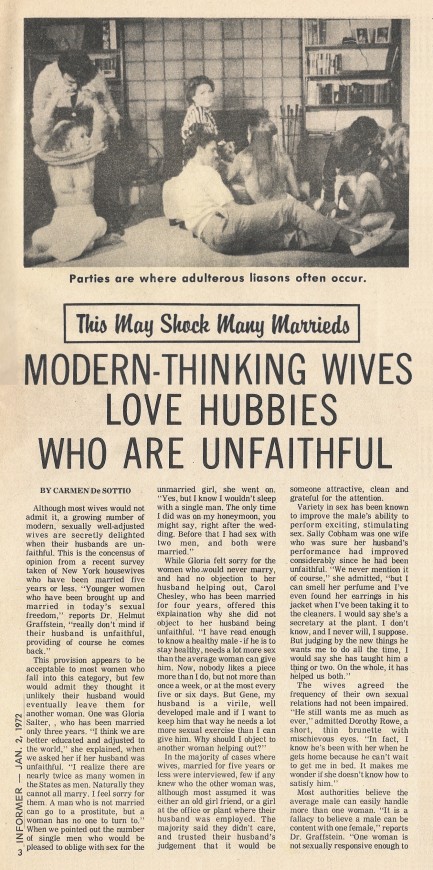  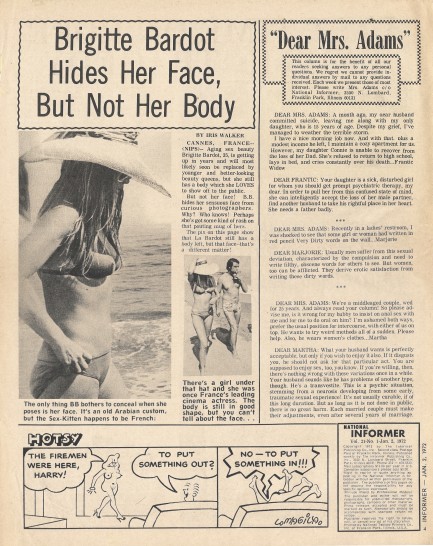             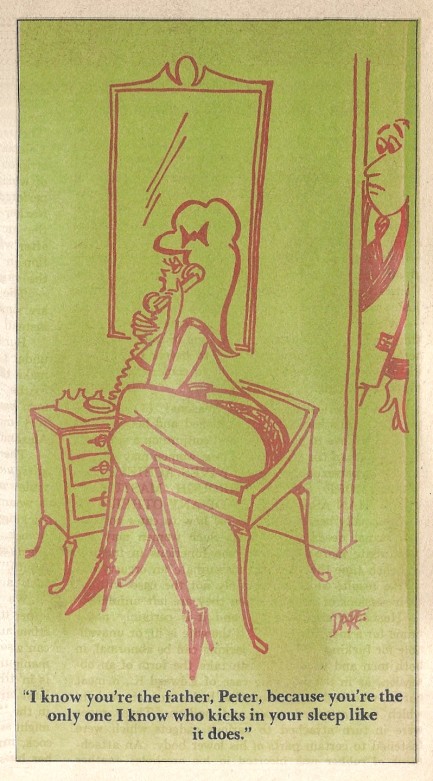 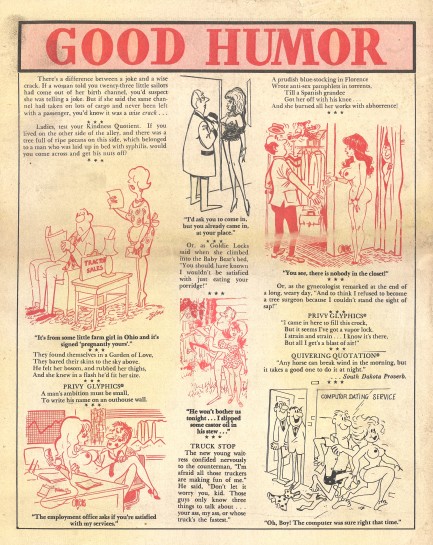
 Crime capers of the rich and infamous. 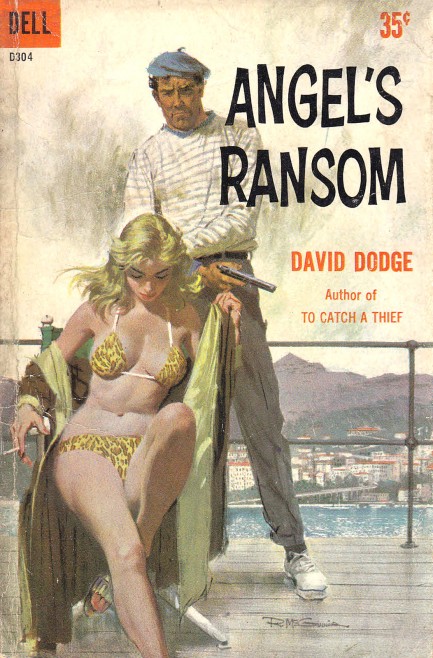
David Dodge's 1956 novel Angel's Ransom takes place in the principality of Monaco, a part of the world the author knew well, along with the rest of the French Riviera. Authentic local details distinguish this kidnapping and ransom thriller, as a group of crooks snatch a yacht called Angel and try to shake down its flamboyantly wealthy owner for 3.5 million francs. Unwillingly along for the ride are the boat's captain, a beautiful guest, a playboy and his distinguished wife, and a Paris showgirl dragged into the plot to assist the criminals. The crooks force the yacht owner to write a bank draft, send a man to Geneva with it, then take the boat out to sea to await word that the draft has been honored. If anything goes wrong, everyone gets to be fish food.
Dodge is a great writer, and this one is good too, though slightly less perfect coming from the master of international intrigue, due to the simple reason that setting most of the action on a boat confines his normally free ranging fiction. But the book is still well written and masterfully paced, with an array of diverse characters to sustain reader interest. If you're going to read any Dodge novel set in this diamonds and champagne milieu we recommend To Catch a Thief—of course—over Angel's Ransom, but you could do far worse than to read any of his international thrillers, including this one. We'll be returning to Monaco with Dodge. He wrote an entire travel book about the French Riviera, ironically titled (because he was a budget traveller), The Rich Man's Guide to the Riviera. We have it and will report back later.
 |  |
|
 |

The headlines that mattered yesteryear.
1974—Police Raid SLA Headquarters
In the U.S., Los Angeles police raid the headquarters of the revolutionary group the Symbionese Liberation Army, resulting in the deaths of six members. The SLA had gained international notoriety by kidnapping nineteen-year old media heiress Patty Hearst from her Berkeley, California apartment, an act which precipitated her participation in an armed bank robbery. 1978—Charlie Chaplin's Missing Body Is Found
Eleven weeks after it was disinterred and stolen from a grave in Corsier near Lausanne, Switzerland, Charlie Chaplin's corpse is found by police. Two men—Roman Wardas, a 24-year-old Pole, and Gantscho Ganev, a 38-year-old Bulgarian—are convicted in December of stealing the coffin and trying to extort £400,000 from the Chaplin family. 1918—U.S. Congress Passes the Sedition Act
In the U.S., Congress passes a set of amendments to the Espionage Act called the Sedition Act, which makes "disloyal, profane, scurrilous, or abusive language" about the United States government, its flag, or its armed forces, as well as language that causes foreigners to view the American government or its institutions with contempt, an imprisonable offense. The Act specifically applies only during times of war, but later is pushed by politicians as a possible peacetime law, specifically to prevent political uprisings in African-American communities. But the Act is never extended and is repealed entirely in 1920. 1905—Las Vegas Is Founded
Las Vegas, Nevada is founded when 110 acres of barren desert land in what had once been part of Mexico are auctioned off to various buyers. The area sold is located in what later would become the downtown section of the city. From these humble beginnings Vegas becomes the most populous city in Nevada, an internationally renowned resort for gambling, shopping, fine dining and sporting events, as well as a symbol of American excess. Today Las Vegas remains one of the fastest growing municipalities in the United States. 1928—Mickey Mouse Premieres
The animated character Mickey Mouse, along with the female mouse Minnie, premiere in the cartoon Plane Crazy, a short co-directed by Walt Disney and Ub Iwerks. This first cartoon was poorly received, however Mickey would eventually go on to become a smash success, as well as the most recognized symbol of the Disney empire.
|

|
|

It's easy. We have an uploader that makes it a snap. Use it to submit your art, text, header, and subhead. Your post can be funny, serious, or anything in between, as long as it's vintage pulp. You'll get a byline and experience the fleeting pride of free authorship. We'll edit your post for typos, but the rest is up to you. Click here to give us your best shot.

|
|























































 Midwood Books had a near-monopoly on artist Paul Rader, and good thing, because the guy was brilliant. His cover for the sleaze novel Strictly Business features an amusing tableau of a dapper businessman chatting with his leering colleague, as a coy beauty sits nearby.
Midwood Books had a near-monopoly on artist Paul Rader, and good thing, because the guy was brilliant. His cover for the sleaze novel Strictly Business features an amusing tableau of a dapper businessman chatting with his leering colleague, as a coy beauty sits nearby.







































































































